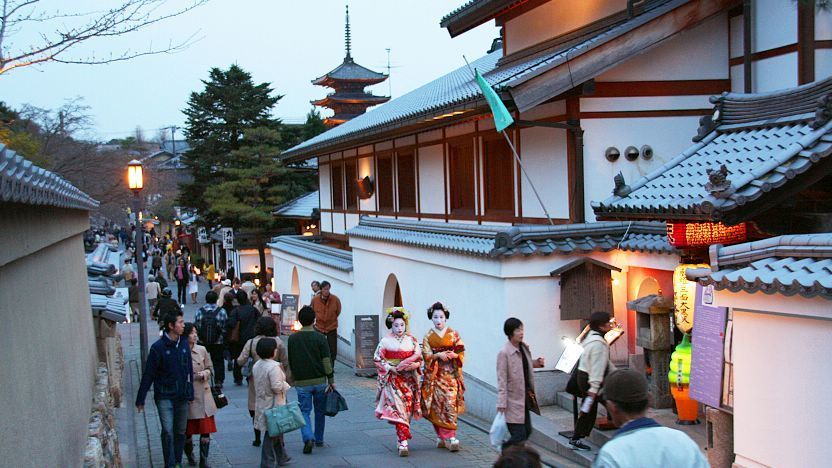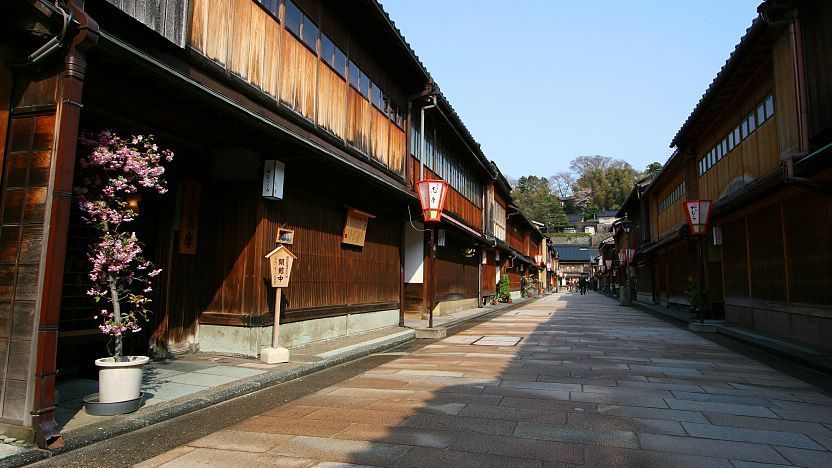Geisha (芸者) (/ˈɡeɪʃə/; Japanese: [ɡeːɕa]),[1][2] also known as geiko (芸子) (in Kyoto and Kanazawa) or geigi (芸妓), are a class of female Japanese performing artists and entertainers trained in traditional Japanese performing arts styles, such as dance, music and singing, as well as being proficient conversationalists and hosts. Their distinct appearance is characterised by long, trailing kimono, traditional hairstyles and oshiroi make-up. Geisha entertain at parties known as ozashiki, often for the entertainment of wealthy clientele, as well as performing on stage and at festivals.The first female geisha appeared in 1751, with geisha before that time being male performers who entertained guests. Only later did the profession become mainly characterised by female workers.[3][a]
1 tours & activities found
Sort by price
In the early stages of Japanese history, saburuko (serving girls) were mostly wandering girls whose families had been displaced by war.[12] Some of these saburuko girls offered sexual services for money while others with a better education made a living by entertaining at high-class social gatherings.[13][14]
After the imperial court moved the capital to Heian-kyō (Kyoto) in 794, aspects of now-traditional Japanese art forms and aesthetic ideals began to develop, which would later contribute to the conditions under which the geisha profession emerged.[15] Skilled female performers, such as shirabyōshi dancers, thrived under the Imperial court, creating the traditions of female dance and performance that would later lead to both the development of geisha and kabuki actors.
During the Heian period, ideals surrounding relationships with women, sexual or otherwise, did not emphasise fidelity, with marriage within the Heian court considered a relatively casual arrangement. Men were not constrained to be faithful to their wives, with the ideal wife instead being a modest mother who managed the affairs of the house, following Confucian customs wherein love had secondary importance to the other roles a wife fulfilled within the marriage. As such, courtesans—who provided not only sexual enjoyment, but also romantic attachment and artistic entertainment—were seen both as an outlet for men and as common companions. Though geisha would not appear until the 1800s, the role and status of courtesans as artistic and romantic entertainers were a tradition that geisha came to inherit, with the basic artforms of entertaining guests through song, dance and conversation being employed and adapted to contemporary tastes by geisha.[citation needed]



77
tours & activities
29
tours & activities
22
tours & activities
17
tours & activities
16
tours & activities
8
tours & activities
8
tours & activities
6
tours & activities
6
tours & activities
6
tours & activities
5
tours & activities
5
tours & activities
4
tours & activities
3
tours & activities
3
tours & activities
2
tours & activities
2
tours & activities
1
tours & activities
1
tours & activities
1
tours & activities